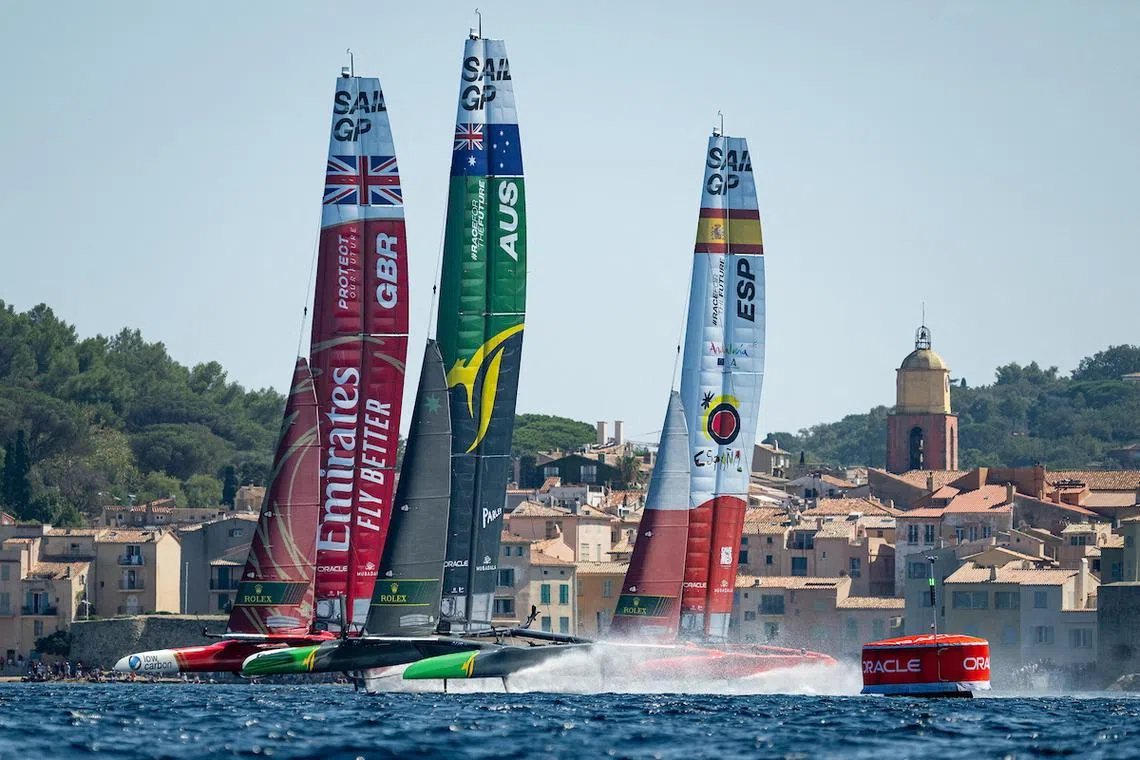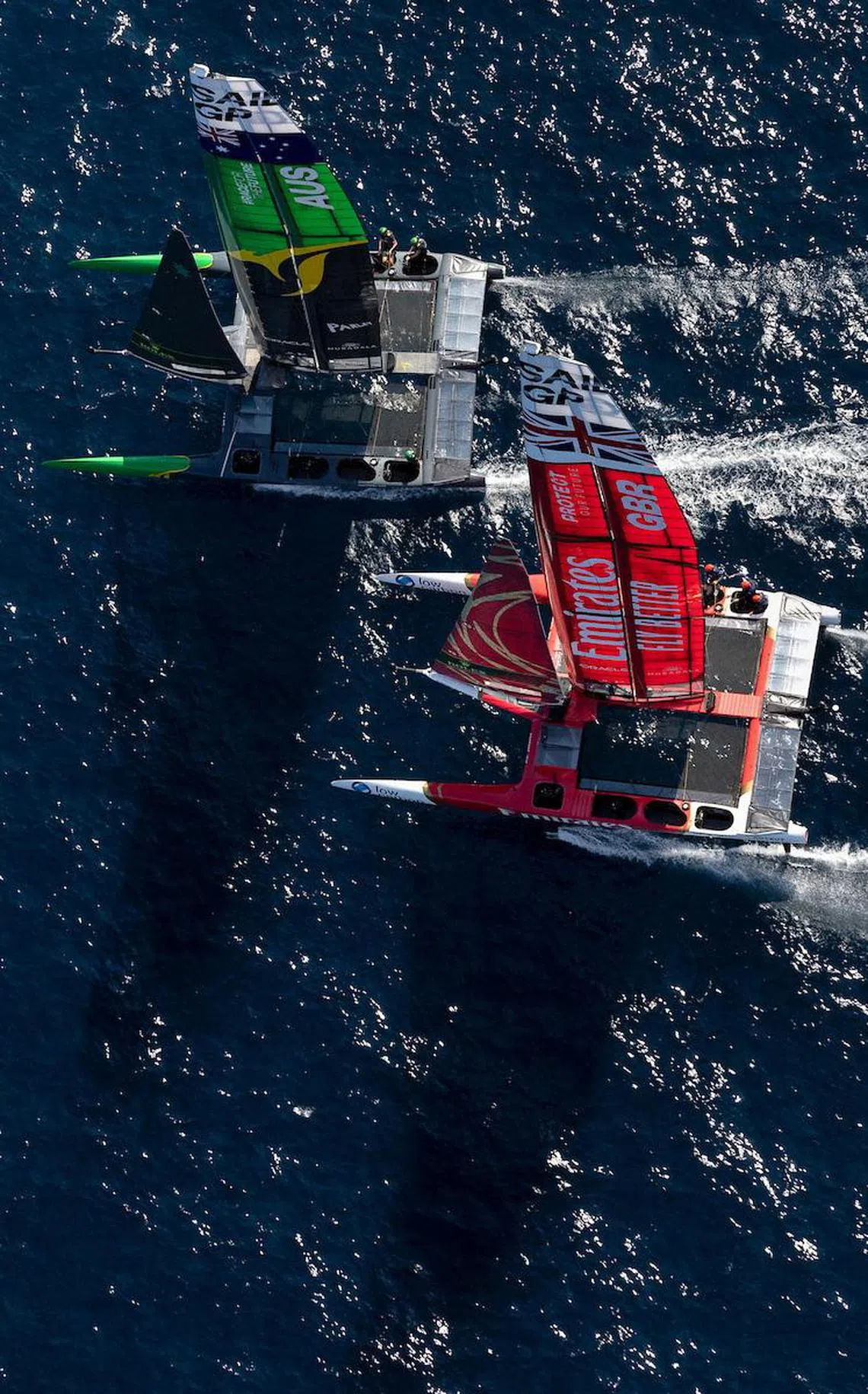Australia has dominated SailGP, but other teams are catching up
Sign up now: Get ST's newsletters delivered to your inbox

Of the 10 competing teams, four are on their fourth season, three are on their third and two are on their second.
SAILGP via REUTERS
Follow topic:
NEW YORK – Tom Slingsby, the chief executive officer and driver of the dominant Australian team, said that winning SailGP’s first US$1 million (S$1.4 million) prize purse in 2019 was one thing. Trying to win it for a fourth consecutive time is much harder.
The team has won the league’s championship three consecutive times, making it the only SailGP squad to have held the title, but things are different this season.
There are more teams, more events and more pressure from up-and-comers and established teams. Also, next year’s America’s Cup is influencing racing for SailGP athletes and teams involved in both events as the SailGP season nears its halfway mark.
But, given the Australian team’s track record, their experienced core team and proven ability to perform under pressure, they are still the team to beat.
That is, so long as the team, and its driver, remain confident.
“In season one, I think we probably won 90 per cent of the events,” said Slingsby, adding that, by season three, this had dropped to about 20 per cent to 30 per cent.
This season, although they have won individual races and amassed enough points to climb to the top of the leaderboard, the team have not won any of the first four regattas, which are each made up of several races.
“It is getting harder to get event wins, the level is higher,” said Slingsby, an Olympic gold medallist. “More teams just means, if you make mistakes, you pay more than you used to.”
SailGP’s first event was in 2019 with six teams contesting five events. Now, 10 teams are competing in 13 events. The next event, the season’s fifth, is in Cadiz, Spain, on Saturday and Sunday.
While more teams mean increased racecourse congestion, it also means more sailors with experience aboard the league’s F50 catamarans, which can sail on hydrofoils at speeds pushing 55 knots.
“The more seasons you go through, the less difference there will be between Australia and the rest of us,” said Nicolai Sehested, the driver for fourth-placed Denmark. “This season we are a lot closer, but they are still ahead of us.”
While Sehested said Denmark built their team with local sailors, others import talent, which means established teams can face the danger of their crew being hired away by the competition.
Kyle Langford, Australia’s wing-trimmer, received another offer ahead of season four but he declined, citing his friendships and the team’s potential.
Still, Ben Durham, the team’s performance coach, called the poaching threat the biggest challenge facing the team all season.
“The great thing was that we were able to maintain everybody,” he said. “That’s really important.”
The team dodged this personnel drain but they cannot escape other teams’ learning curves.
“These teams you think of as teams we should beat, it just doesn’t work that way any more,” Slingsby said. “Any time you get complacent, you get pretty humbled, pretty quickly.”
He is not alone in this assessment.
“I think Australia have been slipping a little bit, left a few points out there compared to where their potential is,” Sehested said.

The Australian and British SailGP teams in action in the final of the France Sail Grand Prix in Saint-Tropez, France, on Sept 10.
PHOTO: REUTERS
While Langford said he believed the Australians would continue to improve, he also said the team were aware of the targets on their back. “We need to be improving just as fast as these guys are,” he said.
Of the 10 competing teams, four are on their fourth season, three are on their third and two are on their second. Only Germany, with former Formula One world champion Sebastian Vettel as co-owner, are new for this season.
“I think most teams will be competitive by the second season,” Sehested said.
SailGP’s open-data policy helps. Each F50 has electronic sensors that harvest 30,000 data points per second, which are sent to an Oracle-based cloud and made available to all teams.
“There’re no secrets out there,” Durham said.
F50s are identical, but teams can – as allowed by the rules – adjust their equipment and settings. As with all other data, these are also shared.
Sehested said his team leveraged the cloud to analyse where the Australians were out-sailing them. “Then we just try to copy their settings and their technique the next day,” he said.
Still, Russell Coutts, a five-time America’s Cup winner and SailGP’s CEO, said that seeing data and emulating on-the-water performance were different things.
One example is Australia’s ability to fly their boat about 1½ inches (3.8cm) higher than other teams. Greater ride height means less drag. “They just can’t duplicate that,” Coutts said.
“It still comes down to that human ability to do it, and the Australians are an example of that.”
NYTIMES

